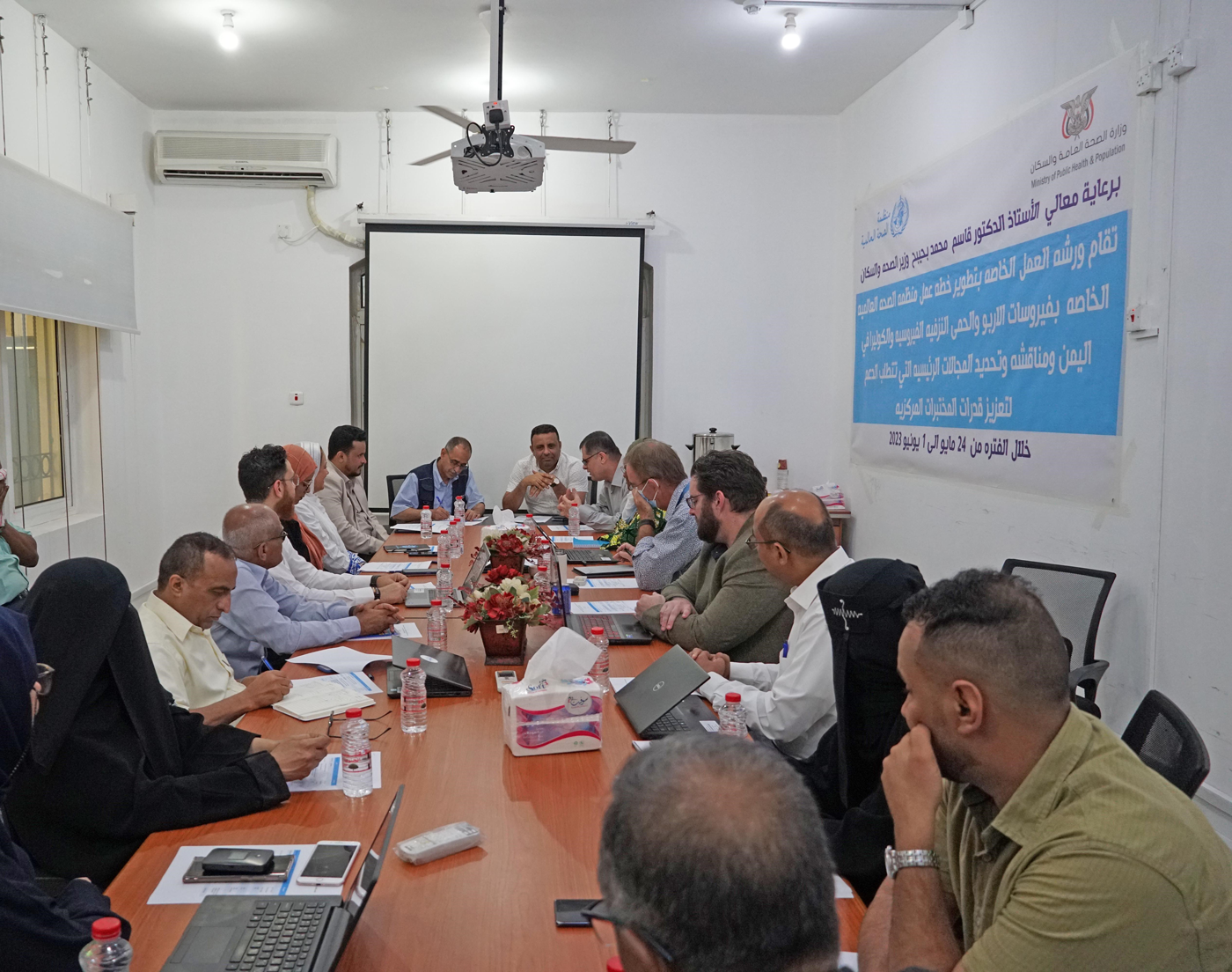 WHO expert during the training session, Aden
WHO expert during the training session, Aden
Cairo, 5 June 2023 – WHO conducted a technical mission to Aden, Yemen, on 24 May–1 June, to assess and enhance country capacity for the detection and surveillance of high-threat pathogens, such as arboviral and acute watery diarrhoeal disease.
Members of the mission held a meeting in the WHO Aden sub-office with representatives from the Ministry of Public Health and Population, national and subnational surveillance teams, Central Public Health Laboratory and WHO laboratory experts.
WHO experts discussed existing surveillance mechanisms for high-threat pathogens, identified gaps and proposed mechanisms for improving the existing detection and surveillance system in Yemen. Clear goals, objectives, timelines and targets were agreed upon to improve overall surveillance and coordination between the laboratory, surveillance, logistical and public health authorities.
To enhance the capacity for detecting and characterizing high-threat pathogens, the team organized a comprehensive training session at the Central Public Health Laboratory in Aden. The training focused on utilizing the Oxford Nanopore Technology sequencing – a platform for metagenomic sequencing of acute watery diarrhoea. It covers both theoretical and practical aspects of identifying pathogens through metagenomic analysis, as well as essential laboratory principles, such as good laboratory practices, biosafety and risk assessments, in line with WHO laboratory biosafety standards.
The training also covered assessment modules and emphasized continuing professional development for the 9 participants from Yemen, following a training of trainers approach to ensure the long-term sustainability of the laboratory programme across Yemen.
 Participants identified gaps and improvement mechanisms
Participants identified gaps and improvement mechanisms
The meeting and training were well received by the attendees and health authorities, with further steps clearly defined for the national laboratory and surveillance programme and for improved collaboration within teams.
A national disease surveillance system is dependent on a strong and sustainable laboratory network, working in partnership with a robust, coordinated surveillance and epidemiology programme. The ability to detect, report and respond to public health threats requires a clear understanding of the roles and responsibilities for each pillar of the surveillance network and reporting actionable data to health authorities to ensure responses are appropriately supported.
This mission is part of WHO’s ongoing technical and logistical support to countries, including countries experiencing complex emergencies, to improve laboratory capacity and to enhance available diagnostic capabilities, to ensure that they can respond to emergencies in a timely and coordinated manner.
Related links
Training on influenza and SARS-CoV-2 genetic sequencing in Muscat, Oman
Investment in genomic surveillance: a priority for the Region


